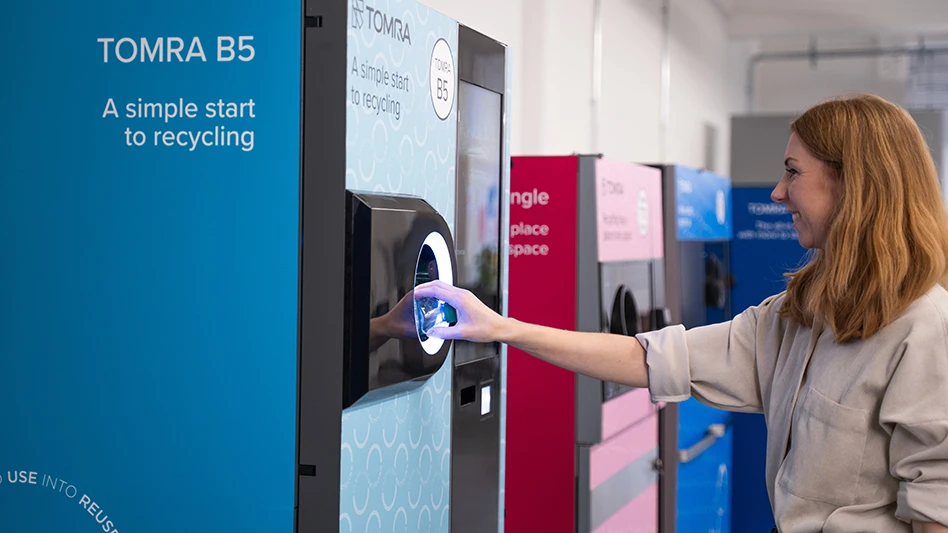
Paper recyclers, the vast majority of whom operate baling equipment, are keenly aware that mill buyers do not want to receive bales of scrap paper that contain above average amounts of water and other liquids.
Preventing excessive moisture in bales has long been a point of emphasis for mill buyers and a point of pride for recyclers who say they can create bales within an acceptably low moisture range. It also has been a point of contention between mills and recyclers, when some mill buyers suspect some recyclers are not doing enough to prevent high moisture levels.
Throughout this decade, associations representing paper manufacturers and recyclers have undertaken considerable dialog to find common ground on the bale moisture issue. At the same time, technology providers have devised instruments designed to more accurately measure the level of moisture in any given bale of paper.
Terms and conditions
Among the organizations engaging in dialog about bale moisture levels are ERPA and CEPI in Europe and ISRI and the AF&PA in the United States.
ERPA (the European Recovered Paper Association) is now a branch organization of Brussels-based
The seven-page “Recovered Paper Quality Control Guidelines” document states the following regarding bale moisture: “Recovered paper and board will, in principle, be supplied with
The document also states that “the method of testing and sampling [is] to be agreed between buyer and seller.”
The middle of this decade has seen Washington-based ISRI (the Institute of Scrap Recycling Industries Inc.) and its PSI (Paper Stock Industries) Chapter bringing bale moisture to the forefront as an issue.
At the ISRI2017 convention, which took place in New Orleans in late April, determining the allowable moisture percentage in bales was a topic addressed by speakers at the third annual PSI Paper Summit SPECtacular, which took place during ISRI2017.
The event was billed as a forum for packers,
In the session on moisture policy, four speakers offered their views on guidelines for measuring moisture in recovered paper bales. PSI members also discussed what the endorsed percentage for moisture content in bales of recovered paper should be.
Johnny Gold, president of Massachusetts-based Gold Group Recycling Consultants LLC, and chairman of the Washington-based American Forest & Paper Association (AF&PA) Paper Recovery Sector, said the AF&PA has a moisture guideline that “is presented as a way to improve the consistency and accuracy of measuring moisture in bales of recovered paper.”
Gold said the industry needs to improve consistency when it comes to measuring moisture in baled paper. “A protocol needs to be set up on both sides of the equation.”
The AF&PA guidelines mention using a calibrated instrument or tool to test bales. The two most common options are a surface measurement tool and a probe-type device, Gold commented.
Linda Leone, regional vice president for recycling in the Northeast United States and eastern Canada at Georgia-based WestRock Co., said that firm has a moisture program that follows AF&PA guidelines “for the most part.” However, mills are not mandated to check for moisture, she said.
While some WestRock mills test every load using a probing tool, others may test a portion of incoming loads, Leone said. The paper company’s moisture limit is 12 percent. “These are limits we set at our mills,” Leone clarified, “not by AF&PA.”
PSI members reached appeared to reach
Kari Talvola of California-based exporting firm FibreTrade, who also is chair of the PSI Specifications Committee, said where measuring tools are stored matters, as do their settings. Ensuring workers are trained to use the probe or surface measurement tools also is important.
Taking good measure
The AF&PA guidelines referred to by Gold are available on the organization’s website. As part of the guidelines, the group offers a number of recommendations to mill buyers as to how to test moisture levels sufficiently without necessarily creating a bottleneck while unloading bales.
Writing that “Controls should be put
- every day a number of loads should be examined and each month all suppliers should have several loads examined;
- testing should be done at random and loads to be measured can be chosen at random every day or they can be predefined, but without advance notice to the supplier;
- if a significant content of moisture is visually detected in a load, moisture measurement should be made, even if it was not planned;
- four bales should be measured from a truck delivery and eight bales from a railcar delivery;
- bales should be selected from the front, middle and back of each truckload while bales from railcars should be selected from the right, center and left sides.
AF&PA also refers to two devices it says can provide moisture level readings for baled scrap paper. One, the AP500 Moisture Meter made by Germany-based EMCO, takes its measurements on the
On its website, EMCO describes the AP 500 as a “one-hand-held measuring device for quick and mobile moisture determination (without sample-taking) for the detection of moisture accumulation in stacks and waste paper bales. The moisture meter determines the absolute humidity in
The other tool, the Aquamoist Model DC-2000-BP, is a probe-type moisture meter designed to detect moisture content from a range of five to 25 percent. “The probe can be pushed through the surface to measure the moisture content of a bale of recovered fiber at any depth greater than one inch.”
The website of the Sweden-based Finna Group, which offers the Aquamoist detector, markets its product toward mill buyers. “Buying excess moisture means paying [the] paper price for water,” writes the company. “Overall average moisture content is important, but since bales dry on the outer surface first, it is also very important to find moisture packets that are buried beneath the apparently dry surface.”
The Finna Group adds, “This baled paper moisture meter will quickly pay for itself by making quick, simple tests for moisture at selected locations of representative bales.”
As bale moisture measurement grows as a practice, it seems likely recycling plant operators themselves will soon start using such meters, both to monitor their own quality control and to have a verified set of measurements recording the moisture level when the bales were shipped from their plants.
Latest from Recycling Today
- ReMA urges open intra-North American scrap trade
- Axium awarded by regional organization
- China to introduce steel export quotas
- Thyssenkrupp idles capacity in Europe
- Phoenix Technologies closes Ohio rPET facility
- EPA selects 2 governments in Pennsylvania to receive recycling, waste grants
- NWRA Florida Chapter announces 2025 Legislative Champion Awards
- Goldman Sachs Research: Copper prices to decline in 2026





